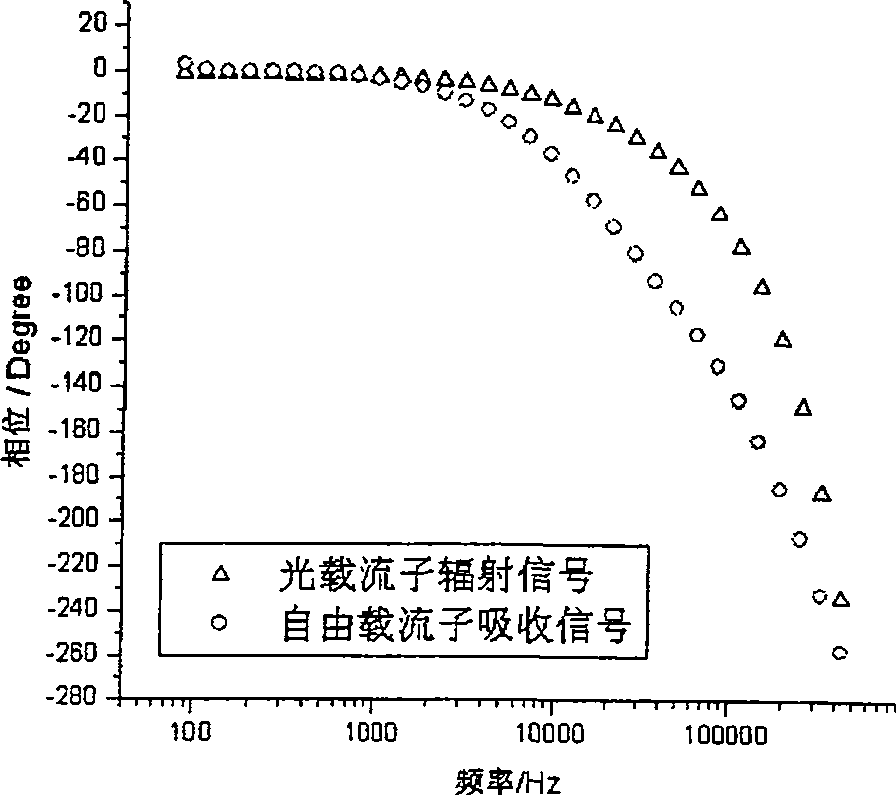Method for measuring semiconductor doping concentration
A technology of doping concentration and measurement method, which is applied in the field of non-destructive testing of semiconductor materials, can solve the problems of affecting measurement accuracy, difficulty in measurement calibration, and no obvious improvement in measurement accuracy, so as to achieve the effect of improving measurement accuracy
- Summary
- Abstract
- Description
- Claims
- Application Information
AI Technical Summary
Problems solved by technology
Method used
Image
Examples
Embodiment Construction
[0026] A specific embodiment of the present invention is given below: by this method, a silicon wafer sample is measured when the distance Δd=0 between two beams of light. The parameters of the silicon wafer sample used: P type, crystal orientation , resistivity 15-25Ω·cm, thickness 550μm, surface implanted with P ions.
[0027] Such as figure 1 As shown, the measuring device for realizing the present invention includes: an excitation laser light source 1, a detection laser light source 2, a signal generator 3, a computer 4, a mirror 5, a precision displacement stage 6, a beam splitter 7, a fluorescence collection system 8, an optical filter 9. Sample stage 10 , carrier radiation signal photodetector 11 , optical filter 12 , carrier absorption signal photodetector 13 , lock-in amplifier 14 , focusing lenses 15 and 16 . The signal generator 3 outputs a periodic square wave signal, and the signal frequency increases in a proportional sequence between 83Hz-436kHz, taking 32 poin...
PUM
 Login to View More
Login to View More Abstract
Description
Claims
Application Information
 Login to View More
Login to View More - R&D
- Intellectual Property
- Life Sciences
- Materials
- Tech Scout
- Unparalleled Data Quality
- Higher Quality Content
- 60% Fewer Hallucinations
Browse by: Latest US Patents, China's latest patents, Technical Efficacy Thesaurus, Application Domain, Technology Topic, Popular Technical Reports.
© 2025 PatSnap. All rights reserved.Legal|Privacy policy|Modern Slavery Act Transparency Statement|Sitemap|About US| Contact US: help@patsnap.com



